Indian states spend 25% of Social welfare’s annual budget on Freebies !!
Many Indian states gives freebies for sole purpose of attracting the voter for getting votes in their favour. Freebies are goods, services, or monetary benefits that governments provide free of cost or at a very highly subsidized rate, usually not directly linked to productive growth. They are often announced to gain short-term political support (especially before elections).
Freebies are Handouts that are more populist and don’t always enhance productivity or social development. Example: Free TVs, free mixers/grinders, free electricity , Laptop , Bicycle , Smart phone , Bus travel etc which are beyond reasonable justifiable needs. State of Punjab spends 45% of its own-tax revenue on freebies , highest in India.
Across India, state governments run many welfare schemes where cash benefits (direct transfers or indirect subsidies) are provided to citizens. These are usually delivered through Direct Benefit Transfer (DBT) into bank accounts (linked with Aadhaar/Jan Dhan), or via indirect support like subsidies.
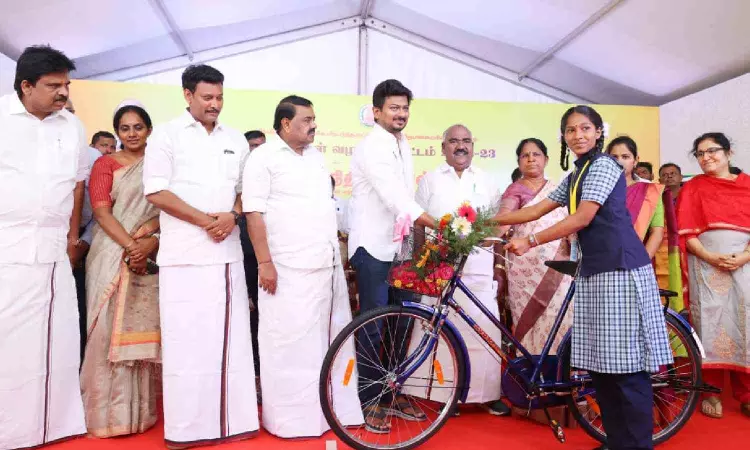
How Freebies Differ from Welfare –
States of India provide welfare assistance to their people. But majority of Welfare funds are distributed as freebies (cash handout – DBT ). This is done to attract voters for Votes .
- Welfare: Spending on essential services that build human capital (education, healthcare, nutrition, social security). These are investments in people.
- Example: Free mid-day meals in schools, universal healthcare, old-age pensions.
- Freebies : handouts that are more populist and do not always enhance productivity or social development.
- Example: Free TVs, free mixers/grinders, free electricity/water beyond reasonable basic needs.
Examples of Freebies
- Free electricity (beyond a survival limit)
- Free laptops, TVs, or kitchen appliances to households
- Free bus or train travel for entire categories of people (not targeted to poor)
- Loan waivers without reforming credit systems
- Cash transfers without employment link
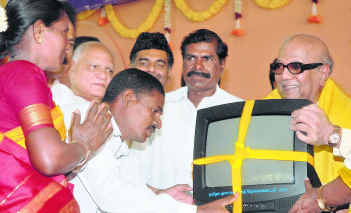
Why Freebies are Controversial
- Fiscal Burden – They strain state budgets and increase borrowing.
- Crowding Out Development – Less money left for infrastructure, healthcare, education.
- Dependency – Encourages reliance on government handouts rather than empowerment.
- Election Populism – Turns elections transactional: “vote for me, get freebies.”
Here’s a categorised list of major types of cash-based welfare schemes run by different Indian states:
1. Income Support / Unconditional Cash
These schemes provide direct money to households, often monthly or annually.
- Andhra Pradesh – YSR Cheyutha, YSR Pension Kanuka → Monthly pensions & support for women and elderly.
- Telangana – Rythu Bandhu (now replaced by Rythu Bharosa) → Direct cash to farmers per acre.
- Odisha – KALIA Scheme → Cash transfer to small & marginal farmers.
- Madhya Pradesh – Ladli Behna Yojana → ₹1,250/month to women aged 21–60.
- Delhi – Old age, widow & disability pensions → Monthly cash transfers.
- Rajasthan – Indira Gandhi Pension Yojana → Cash pension to elderly, widows, disabled.
- Tamil Nadu – Kalaignar Magalir Urimai Thogai → ₹1,000/month to women heads of families.
- Himachal Pradesh – Indira Gandhi Pyari Behna Samman Nidhi → Monthly cash to women.
- West Bengal – Lakshmir Bhandar → Monthly support to women (₹500–₹1,000).
- List is incomplete and subject to update
2. Farmer Income Support
Direct cash given to cultivators for agricultural expenses.
- Telangana – Rythu Bandhu → Seasonal input assistance to farmers.
- Odisha – KALIA → Cash + insurance for small/marginal farmers.
- Jharkhand – Krishi Ashirwad Yojana → Direct income support per acre.
- Chhattisgarh – Rajiv Gandhi Kisan Nyay Yojana → Cash transfer based on paddy procurement.
- Andhra Pradesh – YSR Rythu Bharosa → Cash support to farmers (top-up with PM-Kisan).
- Haryana – Mukhya Mantri Kisan Samman Nidhi Yojana (state top-up to PM-Kisan).
- List is incomplete and subject to update
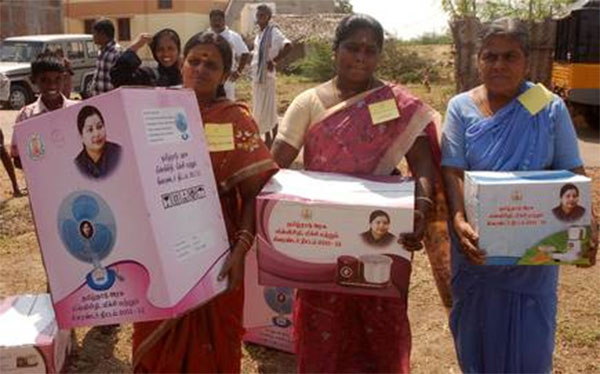
3. Education-linked Cash Benefits
Cash is given directly to students or parents.
- Bihar – Mukhyamantri Balika Cycle / Poshak Yojana → Cash to buy bicycles & uniforms.
- Madhya Pradesh – Gaon ki Beti, Ladli Laxmi Yojana → Scholarship & cash support for girls.
- Uttar Pradesh – Kanya Vidya Dhan → One-time cash after Class 12 for girls.
- Kerala – Minority / SC/ST Scholarships (Marg Deepam, etc.) → Direct transfer scholarships.
- West Bengal – Kanyashree Prakalpa → Annual scholarship + lump sum to girl students.
- List is incomplete and subject to update
4. Marriage & Maternity Assistance
Cash is given for marriage expenses or childbirth/maternity.
- Tamil Nadu – Moovalur Ramamirtham Ammaiyar Ninaivu Marriage Assistance → Lump sum cash for daughters’ marriage.
- Karnataka – Bhagyalakshmi Scheme → Fixed deposits & cash support for girl children.
- Rajasthan – Rajshree Yojana → Cash in installments for girl child (education + marriage).
- Delhi – Ladli Yojana → Cash benefit at birth, schooling, and maturity.
- Odisha – Mamata Scheme → Maternity cash support to pregnant women.
- Madhya Pradesh – Sambal Yojana → Maternity & death assistance for unorganized workers.
- List is incomplete and subject to update
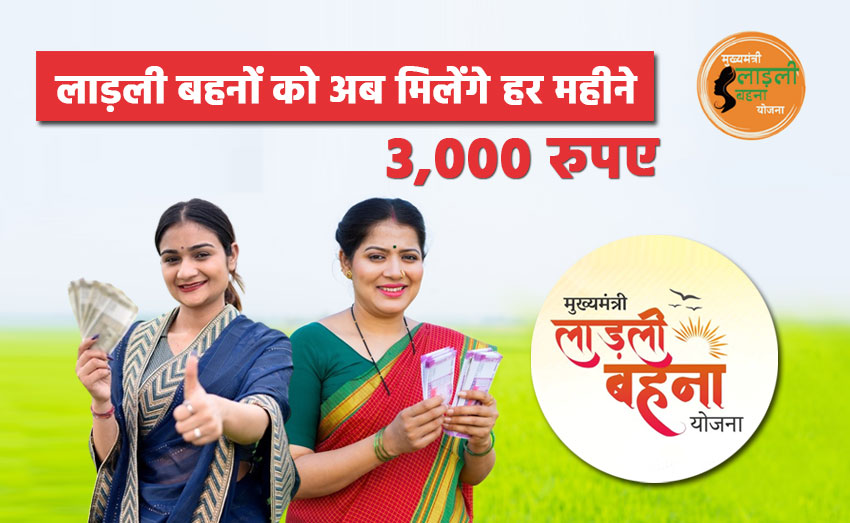
5. Unemployment / Labour Welfare Cash
Cash transfers to unemployed youth or workers.
- Kerala – Unemployment Allowance Scheme.
- Haryana – Saksham Yuva → Monthly unemployment allowance + honorarium for work.
- Jharkhand – Unemployment Allowance Scheme.
- Delhi – Construction Worker Cash Transfers during COVID & ongoing support.
- Rajasthan – Urban Employment Guarantee Scheme (daily wage + direct transfer).
- List is incomplete and subject to update
6. Subsidy Reimbursements (Indirect Cash Benefit)
Instead of services, states reimburse beneficiaries in cash:
- Telangana – Mahalakshmi Scheme (₹500 LPG subsidy) → Cash credited for subsidized LPG cylinders.
- Delhi – Electricity Subsidy → Cash subsidy directly credited to DISCOMs, reducing bills.
- Punjab – Power Subsidy → Similar indirect benefit via state treasury.
- Andhra Pradesh – Amma Vodi → ₹15,000/year to mothers for school children’s education expenses.
- Subject to update
In summary:
Most states run cash-based welfare schemes targeting farmers, women, elderly, students, unemployed youth, and laborers. These are either:
- Direct cash transfers (DBT) → pensions, stipends, women’s income support.
- Conditional cash transfers → linked to education, health, marriage, maternity.
- Indirect subsidy reimbursements → electricity, LPG, or transport costs.

Major Item – Freebies given by States
| Sno | Free Items | Detail | States |
| 1 | Lap Top | Student 10+ | Bihar, Madhya Pradesh, Rajasthan , Sikkim, Tamil-Nadu |
| 2 | Bicycle | School Students | West Bengal , Madhya Pradesh |
| 3 | Smart Phone | Student 10+ | Rajasthan , Chhattisgarh , Punjab , Utter Pradesh |
| 4 | Electricity -Domestic | 100-300 Unit | Bihar , Jharkhand , Karnataka , Punjab , Rajasthan |
| 5 | Bus Tavel | Women , Elderly | Andhra Pradesh , Karnataka , Punjab , Tamil Nadu , Telangana , J&K , Delhi |
| 6 | Cash Help – Rs1000 – 2500 | Women age 18-60 Yrs | Assam , Chhattisgarh , Jharkhand , Karnataka , Madhya Pradesh , Maharashtra , Orrisa , Tamil Nadhu , west Benga , Delhi |
Rat race for giving freebies among states –
The phrase “rat race for freebies” in the Indian context refers to the growing competition among political parties and state governments to outdo each other by offering populist giveaways—often without considering long-term economic sustainability. Here’s a breakdown of the situation:
Why It’s Called a “Rat Race”
- Competitive Populism: Once one state introduces a high-visibility freebie (e.g., free power, bus rides, cash transfers), other states follow suit or promise even more generous schemes to keep voters engaged.
- Election-Centric: Freebies often spike before elections; states try to “buy goodwill” by announcing new subsidies or handouts.
- Short-Term Gains vs. Long-Term Costs: Immediate political mileage is prioritized over fiscal health and development spending.
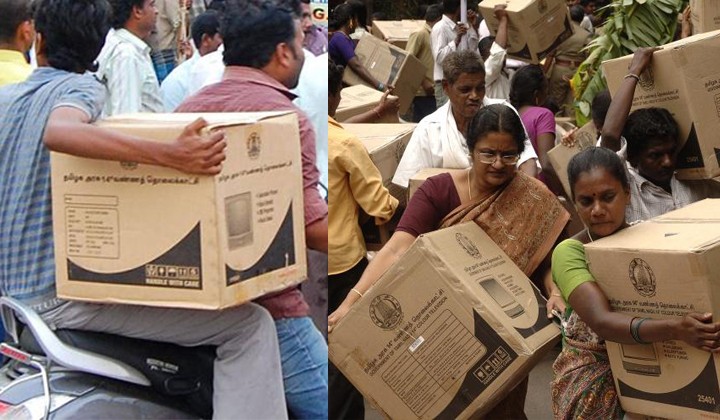
Examples States of the Rat Race –
- Tamil Nadu (Trendsetter): Pioneered subsidized rice in the 1960s, later expanded to TVs, mixers, fans, and laptops.
- Delhi (AAP): Free 200 units of electricity, 20,000 liters of water, women’s free bus travel.
- Punjab (AAP Govt.): 300 units of free electricity, financial aid to women.
- Karnataka (Congress): “5 Guarantees” (free electricity, ₹2,000 for women, free bus rides for women, unemployment allowance, free rice).
- Rajasthan & Maharashtra: Competing with subsidized food, cash support for women, and free healthcare.
- Andhra Pradesh & Telangana: Known for cash transfer schemes like Amma Vodi (mothers for education), Rythu Bandhu (farmers), etc.
- West Bengal: Free bicycles, tablets, and monthly cash allowances.
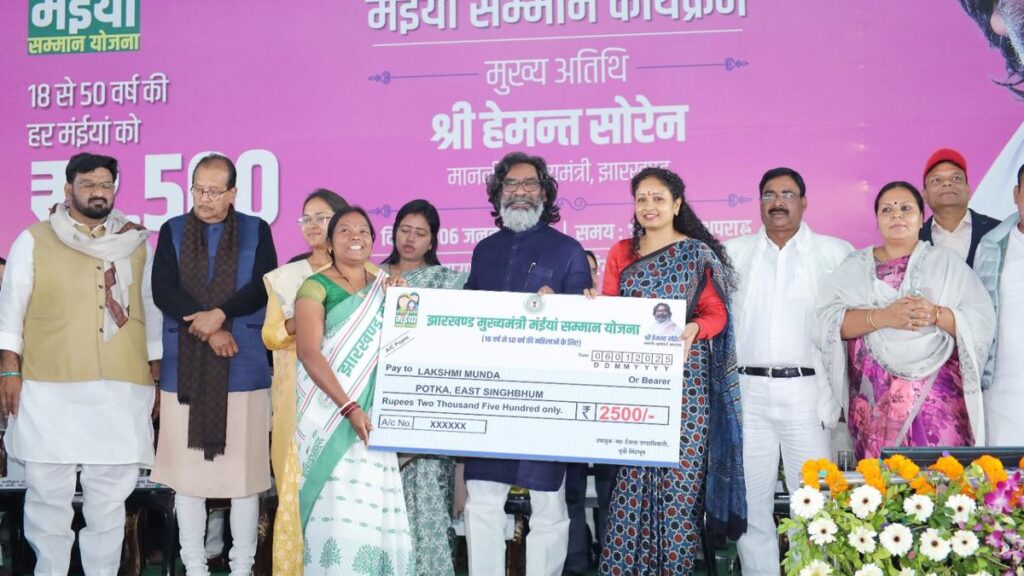
Economic Fallout due to Freebies
- Fiscal Burden
- In Punjab, freebies cost nearly 45% of the state’s own tax revenue.
- In Andhra Pradesh, 30% of revenue went to handouts.
- Crowding Out Development
- Less money left for infrastructure, education, and healthcare.
- Example: Some states delay salaries/pensions or borrow more to fund freebies.
- Debt Trap
- RBI has repeatedly warned that states like Punjab, Rajasthan, Kerala, West Bengal, and Andhra Pradesh are at high risk of financial stress.
Arguments on Both Sides –
- Pro-Freebie (Welfare View)
- Helps the poor survive in times of inflation/unemployment.
- Expands access to education, health, and energy.
- Reduces inequality.
- Anti-Freebie (Fiscal Prudence View)
- Leads to unsustainable borrowing.
- Encourages dependency rather than empowerment.
- Politicizes governance, turning elections into “transactions.”
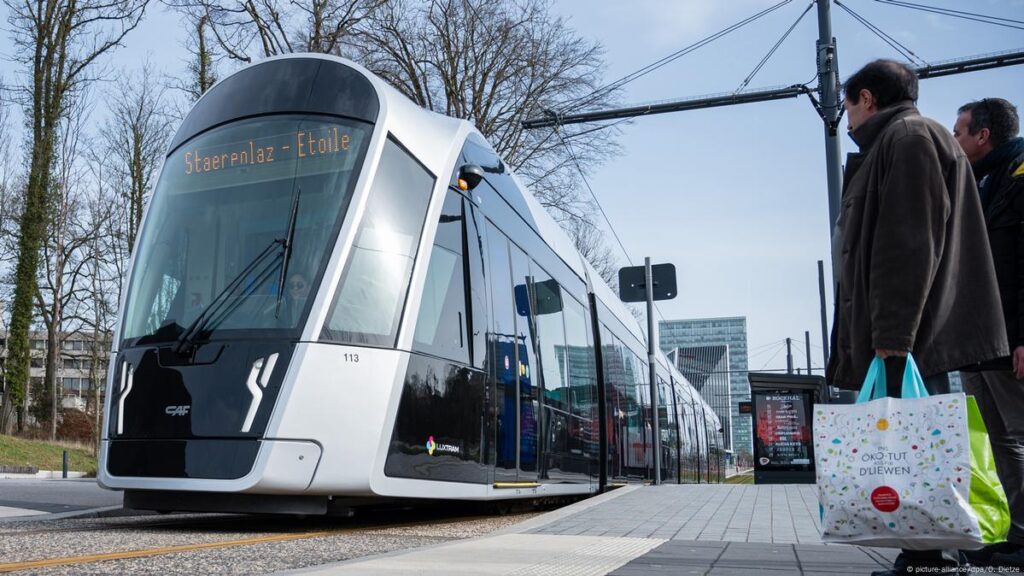
Other Countries Known for Generous Freebies –
Freebies are not only popular in India , but other countries also provide such welfare to the citizen of their countries free of cost . Details as below –
1. Sweden, Luxembourg , Norway, Denmark, Finland, Iceland
- Famous for: Universal welfare states
- Freebies include:
- Free or heavily subsidized higher education
- Free Public Bus , Tram & train transport ( Luxembourg )
- Universal healthcare
- Paid parental leave (up to 480 days in Sweden)
- Child benefits (monthly allowances for every child)
- Model: High taxes fund extensive social security, but not considered “populist freebies”—they’re structured welfare.
2. Gulf Countries (Saudi Arabia, UAE, Qatar, Kuwait) – For Nationals only
- Famous for: Oil-funded welfare states
- Freebies include:
- Free education and healthcare
- Subsidized or free electricity, fuel, and water
- No income tax – To all
- Housing allowances and marriage grants in some states
- Marriage grant is waived off after 3rd child ( few Country )
- Model: Funded by oil revenues, often used to maintain citizen loyalty and political stability.
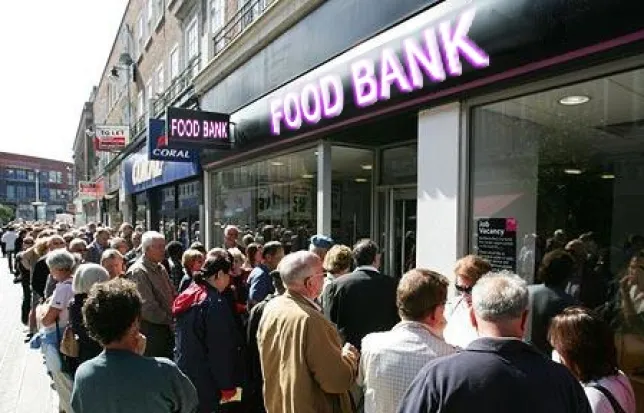
3. United States
- Not usually associated with “freebies,” but it does have large welfare programs:
- Medicare & Medicaid → Free/subsidized healthcare for elderly and low-income groups
- Food Stamps (SNAP) → Free/subsidized food for poor households
- Stimulus Checks (COVID-19) → Direct cash transfers to citizens during crises
- Model: Targeted welfare, but political debate often frames them as “handouts.”
4. Venezuela (under Chávez & Maduro)
- Famous for populist freebies:
- Free fuel (gasoline was cheaper than water for years)
- Food subsidies
- Free housing projects
- Model: Funded by oil wealth but led to economic collapse when oil prices fell.
5. Singapore
- Famous for: “Targeted freebie-lite” model
- Subsidized public housing (over 80% of Singaporeans live in HDB flats)
- Heavily subsidized healthcare and education
- Periodic “GST vouchers” and cash handouts to cushion inflation
- Model: Not excessive—Singapore carefully balances freebies with fiscal prudence.
6. European Union Countries
- Germany, France, Italy, UK, etc.:
- Free or nearly free higher education (Germany, France)
- Universal healthcare
- Child allowances
- Free/subsidized public transport for students or seniors in some regions
7. China
- Freebies include:
- Subsidized housing in urban areas
- Free basic education (9 years)
- Subsidized healthcare for rural and poor citizens
- Model: State-led social security net, though unevenly distributed.
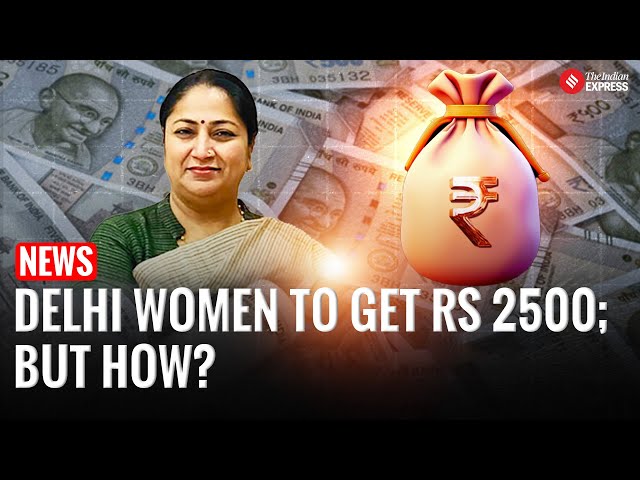
Rat race among States on freebies –
The “rat race for freebies” shows how welfare has morphed into competitive populism—a contest of who can offer the most attractive handouts, often without accountability for long-term consequences.
Some experts argue India needs a “Lakshman Rekha” (clear boundary): differentiate between genuine welfare (education, healthcare, food security) and populist freebies (gadgets, cash, utility giveaways).
Comparative Snapshot
| State / Metric | Key Figure |
| Punjab | Freebies = ~45.4% of own-tax revenue |
| Andhra Pradesh | Freebies = ~30.3% of own-tax revenue |
| Madhya Pradesh, WB, Jharkhand | Freebies = ~25%+ of own-tax revenue |
| Chhattisgarh & Tamil Nadu | Subsidies >5% of GSDP |
| Maharashtra | Freebies ≈ ₹96,000 cr (2.2% GSDP, 19% revenue) |
Overview
- Punjab leads by sheer intensity relative to its own-tax base.
- Maharashtra leads in absolute terms—huge budgetary allocations for high-profile schemes.
- Chhattisgarh and Tamil Nadu lead relative to economic size (GSDP) in subsidy allocation.
- Andhra Pradesh also stands out with significant burdens relative to its tax revenue.
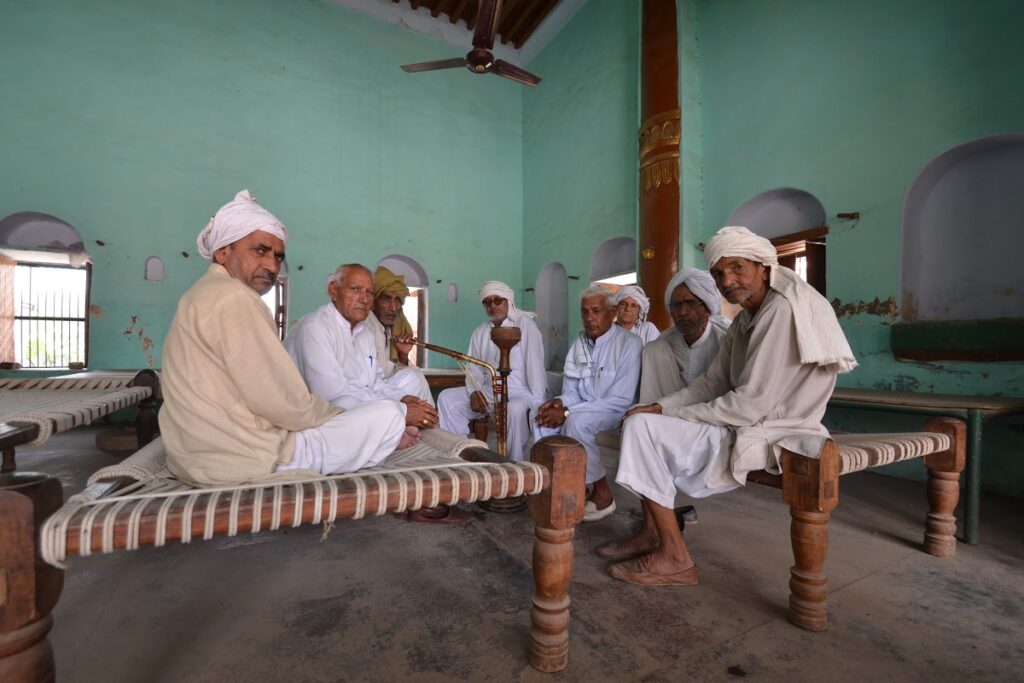
Psychological & Social Effects of Freebies on Human Nature –
1. Creates Dependency
- When people continuously get things for free, they may lose the drive to work hard or innovate.
- Example: If electricity is free, households/farmers may waste it without concern.
2. Erodes Self-Reliance
- Instead of striving for independence, people begin to rely on the state for survival.
- This can reduce initiative, creativity, and entrepreneurial spirit.
3. Encourages a Sense of Entitlement
- Citizens start believing they deserve free services or goods, regardless of contribution.
- Over time, this leads to expectation inflation: today a free TV, tomorrow free internet, later free cash.
4. Weakens the Work Ethic
- If people see survival and comfort guaranteed without effort, motivation to work declines.
- Affects especially the younger generation, who may think “why struggle if everything is given?”
5. Shifts Focus from Rights to Handouts
- Instead of demanding quality healthcare, education, or governance, people may settle for short-term gifts.
- This reduces civic responsibility and lowers democratic accountability.
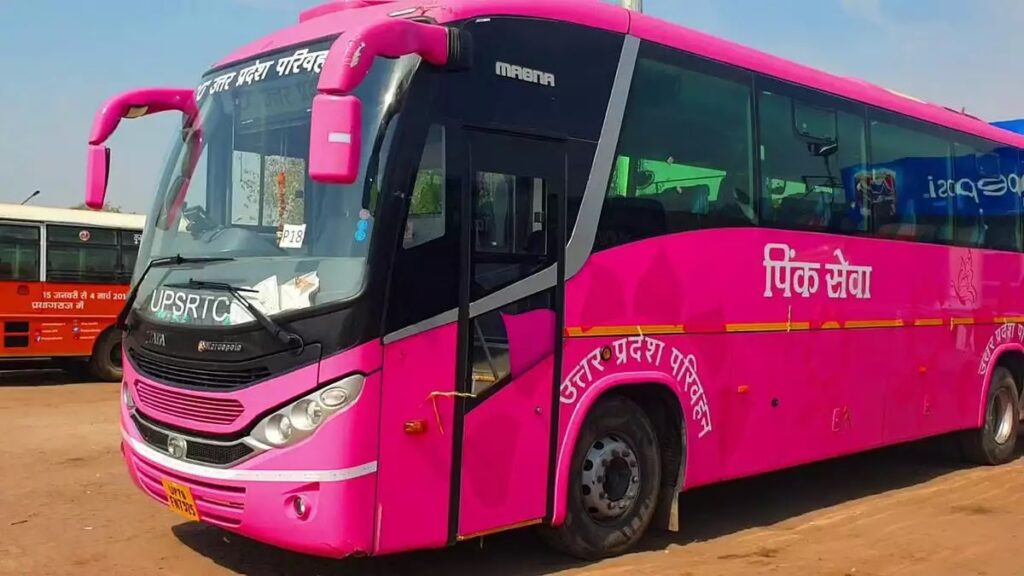
6. Short-Term Gratification
- Freebies give immediate satisfaction, but human nature adapts quickly.
- Once people get used to them, they stop valuing the benefit—leading to endless demand for more.
7. Can Weaken Dignity of Labour
- People may feel that survival doesn’t require effort, lowering the respect for hard work.
- Over generations, this can reduce societal productivity and pride in contribution.
8. Breeds Inequality & Resentment
- When middle-class taxpayers see their money funding free goods for others, it can create resentment and division. The people who pay income tax feel ignored by the govt.
- Freebies meant for “the poor” may also be misused by the better-off, breeding jealousy and unfairness.
Flip Side –
- Basic welfare freebies (like old-age pensions, free food grains for poor, or healthcare) can uplift dignity and survival of vulnerable groups.
- The problem begins when freebies go beyond survival and empowerment, becoming vote-driven luxuries. They risk turning citizens into passive receivers instead of active contributors to society
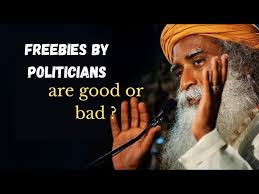
Conclusion
Freebies do offer short-term relief, but they often carry negative long-term consequences to the growth of the state / country. People who are getting Free cash sitting at home get incompetent , stop contributing to the development of the state and also sicken the society . In my opinion Freebies should be given to the extremely poor families, and should not be cast based , gender based or political party based. Currently the tax monies collected from the citizens by the State Govts is being used as Freebies to get votes and to be in Power ?

